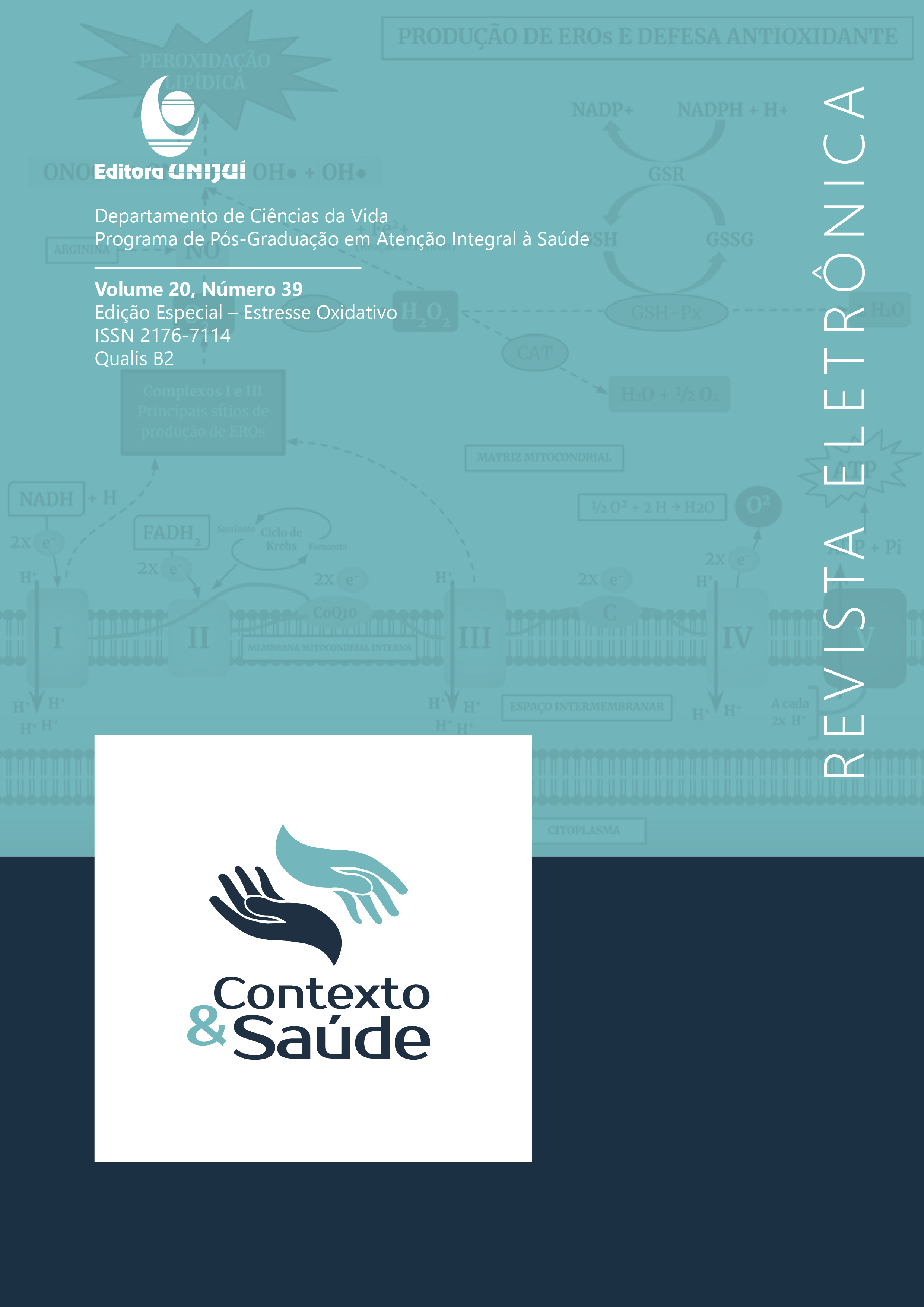EFFECTS OF TYPE 2 DIABETES MELLITUS INDUCTION AND OF MODERATE PHYSICAL EXERCISE ON THE HEPATIC METABOLISM AND OXIDATIVE STRESS IN WISTAR RATS
DOI:
https://doi.org/10.21527/2176-7114.2020.39.55-61Palabras clave:
Insulin resistance; blood glucose; high fat diet; amino acid metabolism.Resumen
AIMS: The aim of the study was to verify if the induction of Type 2 Diabetes Mellitus (T2DM) by the association of streptozotocin and high fat diet causes hepatic alterations and if physical exercise can improve these alterations. METHODS: Forty-six Wistar rats were divided into two groups. One group received a diet containing 60% of fat for 9 weeks and on the 14th day they were injected with a single dose of streptozotocin (25mg/kg). The other group, named control group, received a standard diet and a single dose of citrate buffer was given. Animals were them divided into two subgroups: one sedentary (S) and the other submitted to physical exercise (PE), totalizing four groups: C-S; C-PE; HF-S; HF-PE. After euthanasia blood and liver were collected. Plasma and hepatic concentrations of triacylglycerol and very low density lipoprotein; enzyme alanine transaminase, aspartate transaminase and arginase; urea, lactate and 8-isoprostane (an oxidative stress marker) were dosed. RESULTS: Capillary glucose was significantly higher in HF-S and HF-PE group animals compared to C-S and C-PE groups. There were no significant differences in alanine transaminase, arginase, oxidative stress and lactate concentration among the groups. Plasma urea concentration and hepatic aspartate transaminase concentration was lower in HF-S and HF-PE than in C-PE. Concerning liver triacylglycerol and very low density lipoproteins, both were higher in the HF-PE group when compared to the C-S. CONCLUSIONS: We conclude that diet was decisive for the aforementioned parameters alterations and that physical exercise protocol was not efficient to improve analyzed parameters.
Descargas
Publicado
Cómo citar
Número
Sección
Licencia
Ao publicar na Revista Contexto & Saúde, os autores concordam com os seguintes termos:
Os trabalhos seguem a licença Creative Commons Atribuição 4.0 Internacional (CC BY 4.0), que permite:
Compartilhar — copiar e redistribuir o material em qualquer meio ou formato;
Adaptar — remixar, transformar e criar a partir do material para qualquer fim, inclusive comercial.
Essas permissões são irrevogáveis, desde que respeitados os seguintes termos:
Atribuição — os autores devem ser devidamente creditados, com link para a licença e indicação de eventuais alterações realizadas.
Sem restrições adicionais — não podem ser aplicadas condições legais ou tecnológicas que restrinjam o uso permitido pela licença.
Avisos:
A licença não se aplica a elementos em domínio público ou cobertos por exceções legais.
A licença não garante todos os direitos necessários para usos específicos (ex.: direitos de imagem, privacidade ou morais).
A revista não se responsabiliza pelas opiniões expressas nos artigos, que são de exclusiva responsabilidade dos autores. O Editor, com o apoio do Comitê Editorial, reserva-se o direito de sugerir ou solicitar modificações quando necessário.
Somente serão aceitos artigos científicos originais, com resultados de pesquisas de interesse que não tenham sido publicados nem submetidos simultaneamente a outro periódico com o mesmo objetivo.
A menção a marcas comerciais ou produtos específicos destina-se apenas à identificação, sem qualquer vínculo promocional por parte dos autores ou da revista.
Contrato de Licença (para artigos publicados a partir de setembro/2025): Os autores mantém os direitos autorais sobre seu artigo, e concedem à Revista Contexto & Saúde o direito de primeira publicação.

